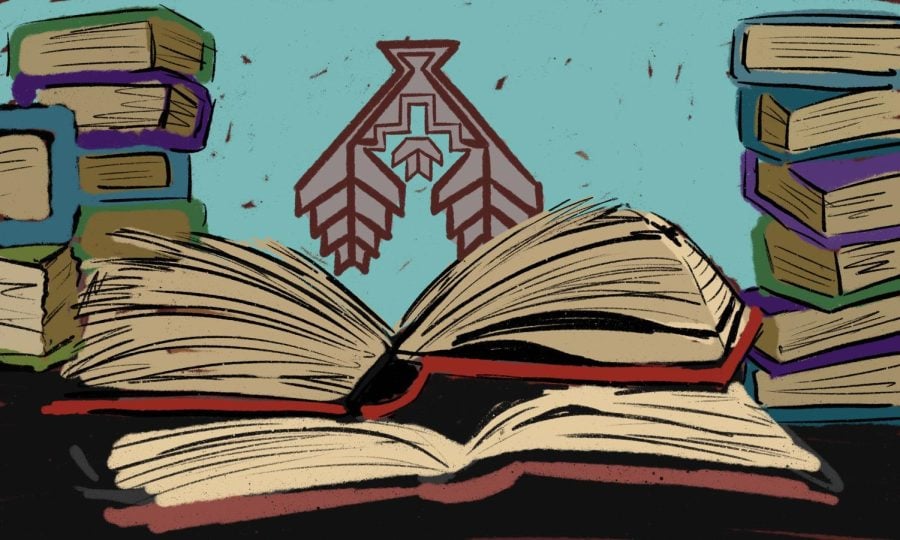Mitchell Museum receives $20,000 grant to create localized K-12 Native studies curriculum
The Mitchell Museum is working on a localized professional development curriculum relating to Native studies for Evanston K-12 educators, museum staff said.
March 6, 2023
The Mitchell Museum of the American Indian received a $20,000 grant in late February to create a localized professional development curriculum about Native studies for Evanston K-12 educators.
The Evanston Community Foundation awarded the grant Feb. 24. ECF provides E-Town Innovation Grants to fund local programs that prioritize equity for people of color and propose new solutions to address community needs.
“The grant … will start a formal collaboration with the school district and local organizations to provide training, professional development opportunities and resources about Indigenous people and histories and our contributions,” said Mitchell Museum Executive Director Kim Vigue, who is an enrolled member of the Oneida Nation and descendant of the Menominee Tribe from Wisconsin.
The grant will also allow the museum to provide continuing education credits to teachers, Vigue said.
Director of Operations Josee Starr, said the museum has provided informal training on diversity, inclusion and cultural competency to educators in the past, but the COVID-19 pandemic largely curtailed these activities.
“We started really making (educational resources) a priority over the past year,” Vigue said. “One of our main priorities going forward is that we reach schools and educators with accurate information.”
Starr — who is an enrolled member of the Three Affiliated Tribes of North Dakota and also represents the Omaha Tribe of Nebraska and Wiikwemkoong First Nation in Ontario, Canada — said the museum has been working to provide resources for teachers since 2010.
The museum established an education task force that created an outline of a K-12 Native studies curriculum, along with a resource guide on teaching about Christopher Columbus, Thanksgiving and Illinois Native peoples.
However, the material needs to be updated to include contemporary Native American figures and issues, Starr said.
Vigue and Starr said Illinois curricula about Native people tend to stop in the late 19th century and focus on removal stories.
Starr said this framing occurs because there are no federally recognized Indian reservations in Illinois due to forced removal and coercive treaty negotiations and policies enacted by the U.S. government from the late 1700s to the 1830s.
“It leaves us virtually invisible,” she said. “We’re not thought of as being present here, even though we have one of the largest urban populations in the country.”
There are about 101,100 Native Americans in Illinois, according to the state’s Department of Central Management Services. Chicago is home to the third-largest urban Native population in the country, with more than 65,000 Native Americans.
Maria Garcia-DesJarlait, an Arikara and Ojibwe pre-K teacher in Elgin, Illinois, said the new curriculum should highlight and normalize contemporary Indigenous culture in addition to history.
“We want to make Indigenous people more visible as people of today and not just the past,” she said. “Native American culture is just as normal as any other culture that we recognize in our schools.”
The museum’s efforts coincide with Illinois House Bill 4548, which would require the Illinois State Board of Education to develop a K-12 curriculum on the “Native American experience.”
The bill, introduced in January, would require schools to implement the curriculum in the 2023-2024 school year and provide for the Board of Education to consult Native American tribes and individuals for curricular development.
Across the state, Native American advocacy groups are assisting schools with Native studies curricula.
Starr also co-chairs the education committee of the Chicago American Indian Community Collaborative, a network of organizations and programs dedicated to improving conditions for Native Americans in the greater Chicago area. She said of the more than 15 organizations in CAICC, 10 are working on Native studies curricula.
“We are trying to pull together everything to be able to include it for the entire state,” Starr said.
Garcia-DesJarlait, who is also on the CAICC education committee, said collaboration is crucial in representing the diverse range of Native histories, cultures and teachings in Illinois.
About 175 different tribes are represented in the Chicago area.
“It’s kind of hard to lump Native Americans all into one category when there’s so many different tribes and so many different teachings,” Garcia-DesJarlait said. “It’s kind of nice when we’re all collaborating. We’re getting a lot of different backgrounds.”
Email: [email protected]
Twitter: @joyycee_li
Related Stories:
— Mitchell Museum of the American Indian hosts 45th Anniversary Benefit and Awards Ceremony
— ‘Connecting with Mother Earth’: Mitchell Museum to host film screening of ‘Inhabitants’
— Meet the three new board members at the Mitchell Museum of the American Indian












